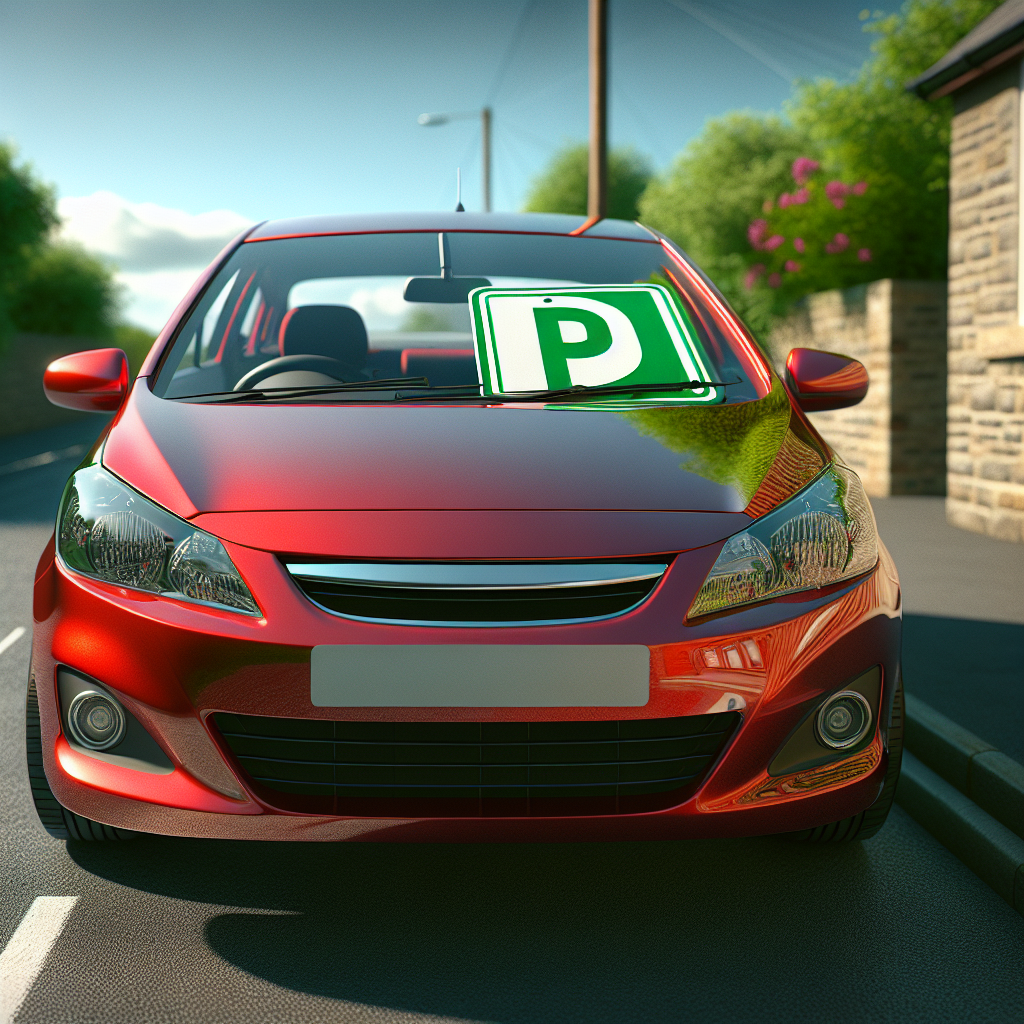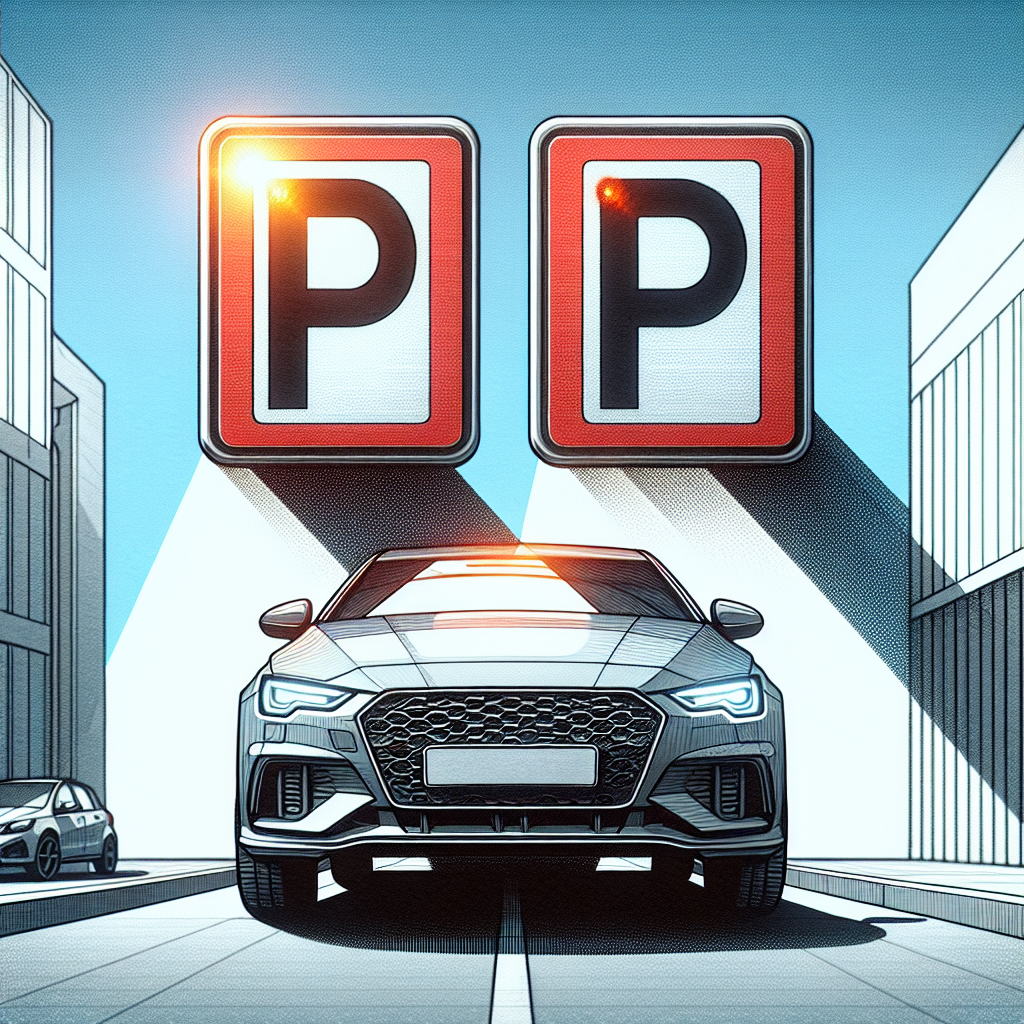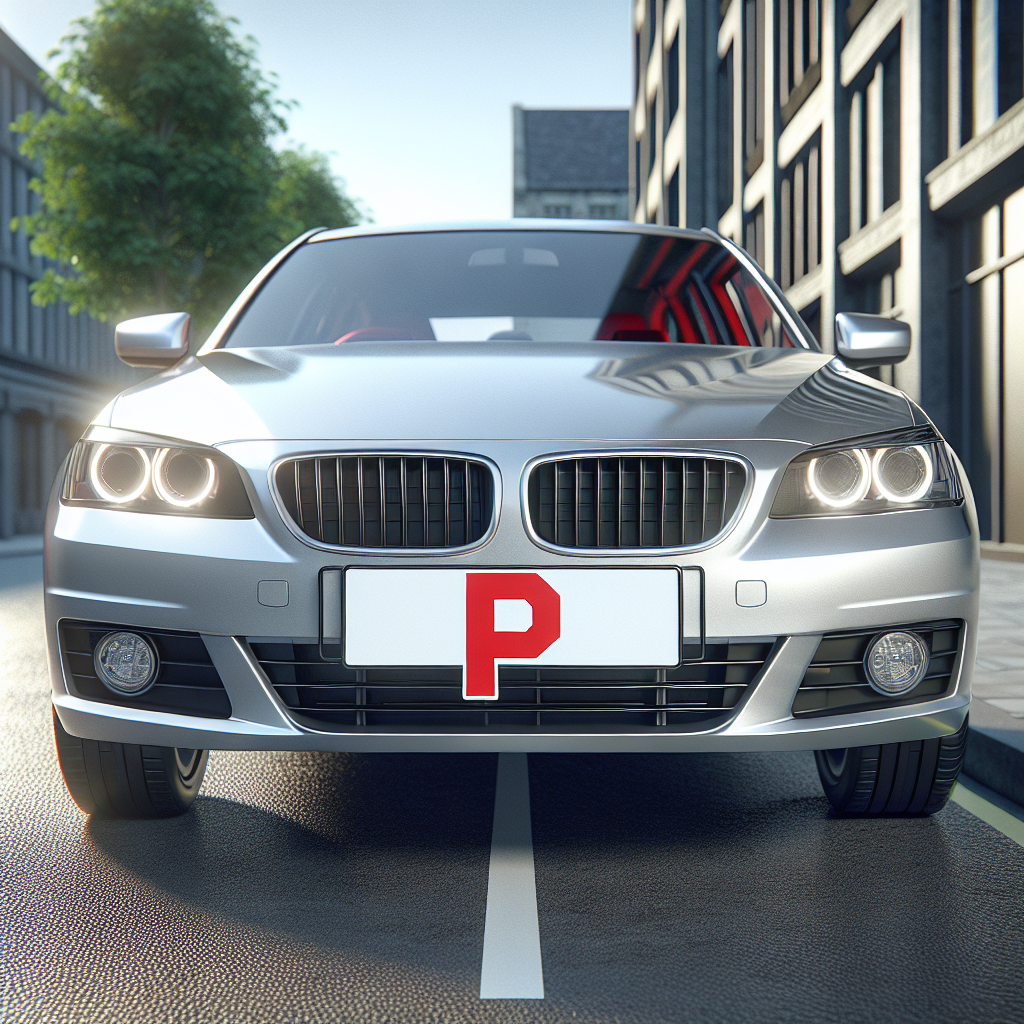Where to Put Your P Plate: A Complete Guide
For newly qualified drivers, displaying P plates on your vehicle is an important step in the transition from learner to proficient driver. The ‘P’ stands for ‘probationary’, indicating to other motorists that you are relatively new to driving independently. The presence of P plates can encourage other drivers to be more patient and considerate, as they understand that you are still gaining experience on the road. Visibility and compliance are key when it comes to P plates, as they must be placed where they are clearly seen by others to serve their purpose effectively.
It’s essential to adhere to the specific regulations that govern p plate where to put, as failure to display them correctly can result in penalties. Each region may have its own guidelines, so it’s crucial to be familiar with the local rules. Beyond legal compliance, the correct placement of P plates enhances road safety. It alerts other road users to give you the space and respect necessary to navigate the roads without undue pressure.
Ensuring you know the rules and positioning your P plates correctly is not only a matter of following the law but also a courtesy to your fellow drivers. To learn more about the best practices and get personalized advice on traveling safely, Contact us at going2travel.com for expert tips and guidance.
Legal Requirements for Displaying P Plates

The legal requirements for displaying P plates can vary significantly from one region to another. In general, however, there are commonalities in the expectations and standards set forth for probationary drivers. Typically, P plates must be affixed to both the front and rear of the vehicle, in a position where they are clearly visible to other road users from a reasonable distance. They should not obstruct the driver’s view, nor should they be placed in a location where they could be obscured by other objects on the vehicle, such as bike racks or spoilers.
Some jurisdictions specify the exact dimensions and color contrast of the P plates, to ensure uniformity and legibility. Additionally, the period during which a new driver must display P plates is often stipulated by law, with some areas requiring them for the first year after obtaining a full driving license, while others may extend this period. It’s imperative that drivers check with their local road authority to confirm the specific requirements they must meet.
Failure to comply with P plate regulations can lead to fines and, in some cases, points on your driving record. Such penalties highlight the importance of understanding and observing the legal stipulations surrounding the display of P plates. This not only ensures that you are operating within the law but also reinforces safe driving practices during the crucial early stage of your driving career.
Optimal Placement of P Plates on Your Vehicle

Securing the optimal placement of P plates on your vehicle is crucial for visibility and compliance. The plates should be positioned in such a way that they are immediately identifiable to other road users, without causing any hindrance to the driver’s ability to navigate the vehicle safely. A common and effective location for the front P plate is on the passenger side of the windshield, affixed from the inside to prevent theft and damage. It should be placed low enough not to obstruct the driver’s view but high enough to be seen over the bonnet of the car.
For the rear P plate, the preferred position is often on the inside of the rear window, or, if this is not possible due to window tinting or design, then on the exterior of the vehicle, typically on the right-hand side. It’s important to ensure that the P plate is not obstructed by the opening and closing of the boot or by any accessories attached to the car.
Magnetic P plates are a popular choice for those seeking a removable option that can be easily transferred between vehicles. However, it is essential to confirm that the magnetic plate securely attaches to the car’s bodywork and that it is regularly checked to prevent it from coming loose while driving. Adhesive P plates are an alternative that provides a more permanent solution, but care should be taken to position these correctly from the outset, as they can be difficult to reposition once affixed.
No matter the type of P plate used, drivers must ensure that the placement does not interfere with the vehicle’s lighting or registration plates, as this could result in non-compliance with road safety regulations. By carefully considering the optimal placement of P plates, probationary drivers can demonstrate their commitment to responsible driving and adherence to local laws.
Tips for Securing P Plates to Avoid Penalties

Properly securing P plates is not just about compliance, it’s about safety and avoiding penalties that come with incorrect display. Here are some tips to ensure that your P plates are secured properly. Firstly, check the durability of the P plate material. Plates should withstand various weather conditions without peeling off or becoming unreadable. Investing in high-quality plates can save you from the hassle of frequent replacements.
Secondly, when using adhesive P plates, clean the surface area where the plate will be attached. Any dirt or residue can affect the adhesiveness, leading to the P plate falling off. For magnetic P plates, make sure the magnet is strong enough to hold the plate firmly against the vehicle at all speeds and that it is attached to a flat, metallic surface free of rust or damage.
Regularly inspect your P plates to ensure they remain securely in place and clearly visible. Adverse weather conditions or the simple act of washing your car can cause plates to become loose or even lost. Reposition or replace them as necessary. It’s also wise to keep spare P plates in your vehicle, so you can promptly replace any that are damaged or lost.
Lastly, be aware of the specific regulations in your state or territory, as requirements for displaying P plates can vary. Non-compliance can result in fines or demerit points, so it’s crucial to understand and follow the rules. By taking these steps to secure your P plates properly, you ensure that you’re following the law and maintaining a safe driving environment for yourself and others on the road.
Removing and Replacing P Plates When Necessary

Transitioning between provisional and full licenses is a milestone that requires the removal of P plates. However, there might be instances when P plates need to be removed and replaced before this transition. Understanding when and how to do this is essential for provisional drivers to remain compliant with driving regulations.
When removing adhesive P plates, gently peel them off to avoid damage to the vehicle’s surface. If residue is left behind, a bit of warm soapy water or an appropriate adhesive remover can be used to clean the area. Avoid using sharp objects or abrasive cleaners that could scratch the paint.
For magnetic P plates, lift from one corner and peel back carefully to prevent bending or damaging the plate. Store them flat and away from direct sunlight when not in use to prevent warping or fading.
Replacing P plates may be necessary if they become damaged, faded, or if you’re driving a different vehicle. Always carry an extra set of P plates in your vehicle for such circumstances. It’s important to remember that driving without clearly visible P plates, even if just for a short journey, can lead to penalties.
In the event that your P plates are stolen or lost, replace them immediately. While awaiting replacement, it’s advisable to avoid driving unless absolutely necessary, as driving without P plates can result in fines or demerit points.
Regularly check your P plates for wear and tear. If they’re no longer in pristine condition, it’s time for them to be replaced to ensure they are easily visible to other road users, which is a critical aspect of road safety and provisional driver regulations.
Common Mistakes to Avoid with P Plate Placement
Even the most diligent provisional drivers can make errors when it comes to P plate placement. Avoiding common mistakes ensures that you adhere to the rules and avoid unnecessary penalties. Here are some pitfalls to steer clear of:
- Placing P plates in a way that obstructs your view, such as on the windscreen or rear window, can be dangerous and is often against the law.
- Using P plates that are not the correct size or color can result in fines, as they must meet specific standards to be compliant.
- Forgetting to display P plates on both the front and back of your vehicle is a typical oversight that can lead to being pulled over by the authorities.
- Attaching P plates in a location where they can easily fall off, such as on a car’s bumper, is a mistake that could cause you to drive without displaying a plate.
- Displaying P plates that are dirty or faded can make them difficult to see, which is not only a compliance issue but also a safety hazard.
Remember, it’s your responsibility to ensure your P plates are correctly displayed at all times. Regular checks and maintenance can prevent these common mistakes. If you’re unsure about the proper placement or regulations regarding P plates, contact us at going2travel.com for expert advice and assistance. Our blog also offers a wealth of information to help provisional drivers stay informed and compliant.
As you gain experience on the road, keep these tips in mind to avoid common pitfalls associated with P plate placement. By doing so, you’ll contribute to a safer driving environment for yourself and others on the road.







